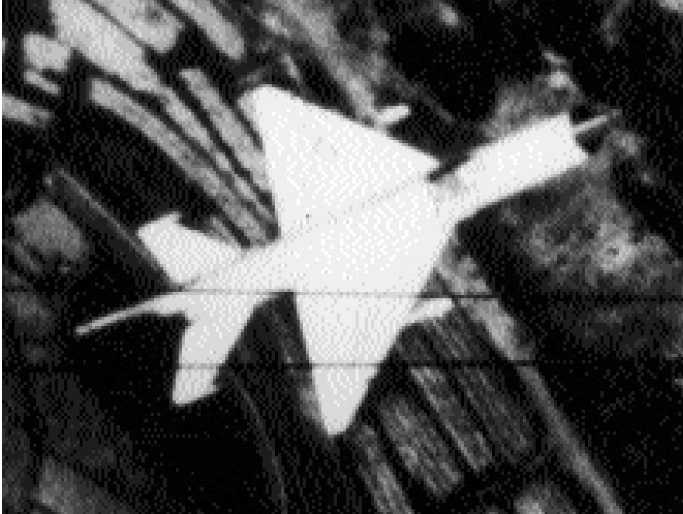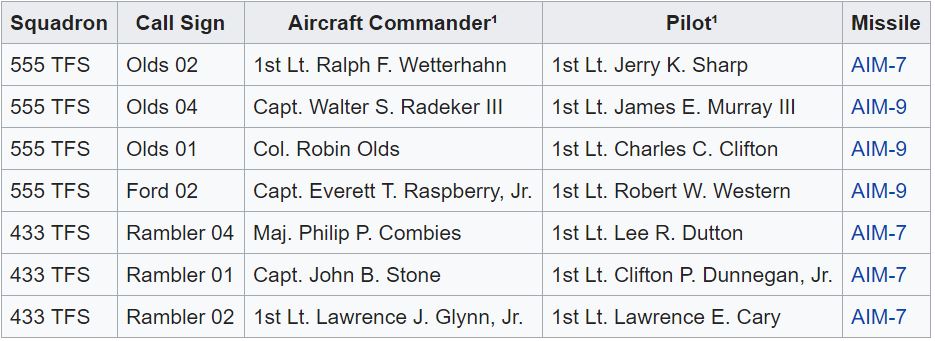Histoires aéro
Robin OLDS: An extraordinary fighter pilot!
Robin Olds was an outstanding United States Air Force (USAF) fighter pilot during World War II and the Vietnam War. Born on July 14, 1922 in Honolulu, Hawaii, Olds left an indelible mark on the history of military aviation due to his exceptional skills, courageous leadership and flamboyant attitude. He is one of the few “aces” to have won aerial victories on propeller-driven Warbirds, then on jet fighters.

Youth and Training
Robin Olds was the son of USAF General Robert Olds, an aviation pioneer. He grew up in a family where aviation was a shared passion. Robin attended West Point Military Academy, where he distinguished himself not only academically, but also as an athlete, competing in boxing and soccer.
The Second World War
Olds began his military career as a second lieutenant in the United States Army Air Forces (USAAF), and quickly demonstrated exceptional skills as a fighter pilot. During the Second World War, he was assigned to the 434th Fighter Squadron, taking part in missions over Europe. It scored its first aerial victory on January 12, 1944.
However, it was during his time with the 479th Fighter Group that Olds really shone. He implemented innovative tactics and developed air combat skills that made him an aviation ace. He was credited with 12 confirmed air victories during the war.
The Vietnam War
Olds continued to serve in the USAF during the Vietnam War. He was appointed Commander of the 8th Tactical Fighter Wing at Ubon Royal Thai Air Force Base. During his command, he led his pilots on daring missions and implemented tactics that had a significant impact on the conflict.
One of its most famous actions was the raid on Hanoi, where its pilots destroyed a number of enemy aircraft on the ground. For this mission, he was awarded the second star of his three Distinguished Flying Crosses.
Colonel Robin Olds’ OPERATION BOLO raid on Hanoi during the Vietnam War was one of the most memorable actions of his career, and marked a turning point in the conflict. The raid, which took place on January 11, 1967, was boldly planned and demonstrated the bravery and tactical ingenuity of the US Air Force commander.

Context
At the time, Hanoi, the capital of North Vietnam, was heavily defended by formidable air defense systems, including surface-to-air missiles. Air raids in this area were extremely risky, with F-105 aircraft suffering heavy losses at the hands of MIG-21s. Olds was determined to inflict significant losses on the enemy and undermine their fighting ability.
Planning and Execution
Olds came up with an innovative plan to attack North Vietnamese forces on the ground. He decided to replace the F-105 Thunderchief with the F4 Phantom, superior to the MIG-21. To achieve this, the F4s borrow the F-105s’ radio call signs, electronic nacelles and flight profile to reach hostile territory. The ruse worked perfectly, and the F4s decimated the MIG-21s coming to meet them, leaving the F-105s arriving behind free access.
The raid targeted the Forbidden City military complex in Hanoi, where many enemy aircraft were stationed. American fighter pilots attacked with precision, destroying several aircraft on the ground and inflicting heavy damage on enemy military infrastructure.
Results and impact
The Hanoi raid was a tactical success. The fighter pilots led by Olds destroyed or damaged almost 40 enemy aircraft (around a third of their entire fleet), seriously disrupting the operational capabilities of the North Vietnamese air force. What’s more, the raid demonstrated the vulnerability of North Vietnamese defenses and showed US forces that they could have a significant impact even in heavily defended areas.
7 MIG-21s are shot down in flight

Heritage
The Hanoi raid reinforced Robin Olds’ reputation as a daring and innovative commander. He was awarded the second star of his third Distinguished Flying Cross for this mission. The feat also inspired other daring tactics in air operations during the Vietnam War.
The Hanoi raid has gone down in military history as an example of courage, strategic planning and precise execution. He helped shape the perception of Robin Olds as an exceptional leader, and established his legacy as one of the most outstanding figures in American military aviation.
Legacy and posterity
Robin Olds retired from the USAF in 1973 after an outstanding career. He died on June 14, 2007 at the age of 84. His legacy lives on not only through his exceptional flying skills, but also as a charismatic leader and innovator in the field of military aviation.
He is best known for taking the fighter pilot mindset to the extreme (Fighter Spirit), in particular by sporting a bulletproof mustache which gave rise to the tradition shared today by American and French fighter squadrons of the mustache march. Every year in March, fighter pilots wear a moustache to honor his memory, and thereby cultivate the fighter pilot’s state of mind, summed up in his autobiography by the famous formula ” Fighter pilot is an attitude “.
His life and career have been immortalized in books and documentaries, allowing future generations to draw inspiration from his dedication to military service and his significant impact on aviation history. Robin Olds remains an emblematic figure embodying the bravery and professionalism of American fighter pilots.

